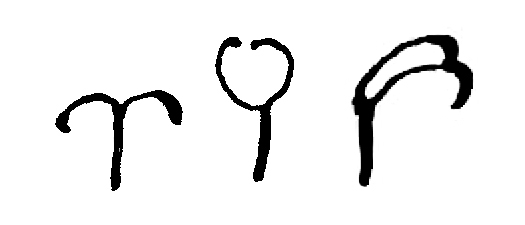To J. D. Hooker 14 July [1863]
Down
July 14th
My dear Hooker
I am getting very much amused by my tendrils— it is just the sort of niggling work which suits me & takes up no time & rather rests me whilst writing.1 So will you just think whether you know any plant, which you could give or lend me or I could buy with tendrils remarkable in any way, for development, for odd or peculiar structure or even for odd place in natural arrangement.—2 I have seen or can see Cucurbitaceæ—Passion-flowers—Virginian creeper—Cissus discolor—common Pea & Everlasting pea.—3 It is really curious the diversification of irritability (I do not mean the spontaneous movement, about which I wrote before & correctly as further observation shows);4 for instance I find a slight pinch between thumb & finger at end of tendril of Cucurbitaceæ causes prompt movement, but a pinch excites no movement in Cissus.— The cause is that one side alone, (the concave) is irritable in former; wheres both sides are irritable in Cissus, so if you excite at same time both opposite sides there is no movement; but by touching with a pencil the two branches of tendril in any part whatever you cause movement towards that point; so that I can mould by mere touch the two branches into any shape I like
 &c &c The peduncle of tendril is either not sensitive or sensitive only to prolonged though slight pressure &c &c.—5
&c &c The peduncle of tendril is either not sensitive or sensitive only to prolonged though slight pressure &c &c.—5
If you can screw out a little time do come here for a Sunday, I shd. so like it, & I have been better of late & shd. stand some talking well.—
What a splendid number the last of N. Hist. Review.—6 Capital, as they seemed to me, Botanical & Zoological papers.— The embryology of Echinodermata seemed capitally done.7 I suppose I owe to Oliver the capital & clear article on Linum.8
GoodBye, it is awfully hot.— Ever yours affect— | C. Darwin
Footnotes
Bibliography
‘Climbing plants’: On the movements and habits of climbing plants. By Charles Darwin. [Read 2 February 1865.] Journal of the Linnean Society (Botany) 9 (1867): 1–118.
Thomson, Charles Wyville. 1863–4. On the embryology of the Echinodermata. Natural History Review n.s. 3 (1863): 395–415; 4 (1864): 581–611.
‘Two forms in species of Linum’: On the existence of two forms, and on their reciprocal sexual relation, in several species of the genus Linum. By Charles Darwin. [Read 5 February 1863.] Journal of the Proceedings of the Linnean Society (Botany) 7 (1864): 69–83. [Collected papers 2: 93–105.]
Summary
Requests tendril-bearing plants.
Letter details
- Letter no.
- DCP-LETT-4241
- From
- Charles Robert Darwin
- To
- Joseph Dalton Hooker
- Sent from
- Down
- Source of text
- DAR 115: 200
- Physical description
- ALS 3pp †
Please cite as
Darwin Correspondence Project, “Letter no. 4241,” accessed on 18 April 2024, https://www.darwinproject.ac.uk/letter/?docId=letters/DCP-LETT-4241.xml
Also published in The Correspondence of Charles Darwin, vol. 11


